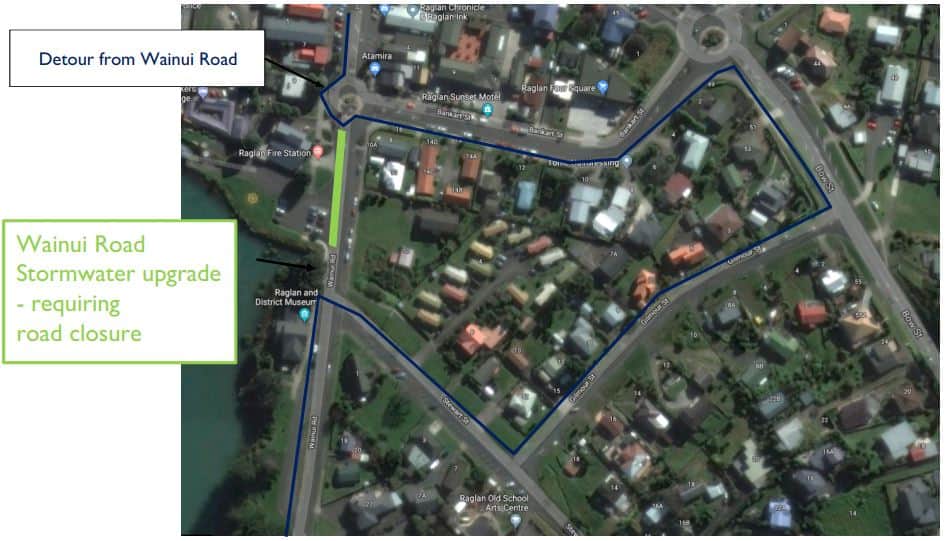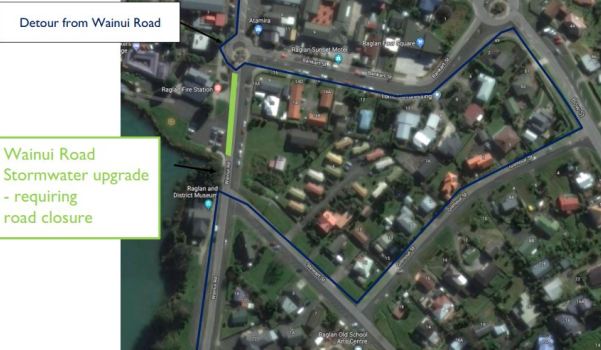
When Waikato District Council first announced that Wainui Road would be closed from Monday 20 August to 26th October to upgrade the storm water pipes, the announcement only mentioned vehicles being diverted onto Gilmour Street. Raglanites were left wondering about pedestrian access.
On the 13th August, Service Delivery General Manager, Ian Cathcart added a statement that, ” pedestrians will be able to walk through the area guided by traffic controllers”. As this seemed a bit odd and didn’t cover situations when the traffic controllers had gone home for the night, Raglan 23 put these questions to the council:
R23: Will cyclists, people in wheelchairs and parents with children in strollers be able to get through (as well as pedestrians)?
WDC: The footpath on the Museum side of Wainui Rd will remain open during the work.
All footpath users of the path on the Northern side of Stewart Street will be directed around the worksite to the footpath on the Museum side of Wainui Road.
Traffic Controllers will be onsite to assist guiding pedestrians (footpath users) during the daytime works.
R23: Will access still be available to the footbridge from Wainui Road?
WDC: This access will be unaffected.
So that’s good. We now know that footpath access will be maintained at all times during the works.
As Waikato District Council often overlooks the need for an archaeological authority for excavation work in the historic parts of Raglan we also asked them:
R23: Also does WDC hold an archaeological authority for the excavation?
Although they couldn’t answer this at first, they now appear to have been granted an authority on the basis of the accidental discovery protocol and have said, “The upgrade replacement of the Wainui Road Culvert is in an alignment where ground materials are expected to be highly modified due to previous excavations to install the existing pipework, therefore the potential to encountered archaeological remains is unlikely. The Contractor will however have an accidental discovery protocol in place during the work.
Accidental discovery protocols establish the steps to be taken in the event that historic heritage (such as archaeological or wāhi tapu sites) is unexpectedly discovered during subdivision, use or development.”

